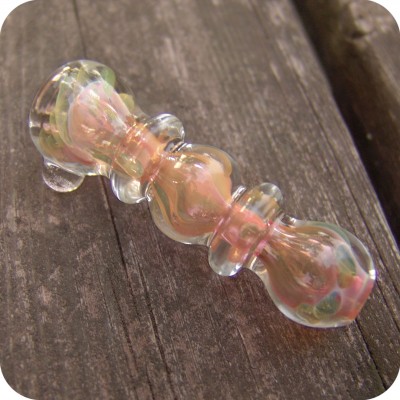No products in the cart.
Informative
Origin of the Bat Pipe
The Sādhus and the Bat Pipe
A bat is a straight, conical pipe. It’s origins date back to an eighteenth century Hindu group called the sādhus. The sādhus are greatly respected and sometimes feared in India. They follow a school of thought known as advaita which rejects duality and utilizes altered states of consciousness. Through these practices they strive to elevate themselves above what they consider to be the illusory nature of reality. Their austere practices are often considered taboo and contradictory to conventional life.
In English the word ‘sādhu’ translates to ‘good man’ or ‘holy man’. It branches from the word ‘sādh‘ which means ‘to reach one’s goal’ or ‘to make straight’. The sādhus live a life dedicated to achieving moksa (liberation) which is the fourth and final aśrama (life stage) in the Hindi belief system.
It is a popular ritual within the sādhu culture to use the bat pipe as a sacramental tool inline with their worship of Shiva. 
Bat pipe use continues with the sādhus today. A growing number of Hindu people, specifically those living in the more urban areas of India, resent the sādhus for their bat pipe use, believing that it paints a negative face on Hinduism, as images of sādhu bat pipe use has become popular within Western culture.
The bat pipe and the Rastafari
Rastafarians are also well known bat pipe users. Because bats are easy to maneuver and pass between people, they tend to foster unity and togetherness. The concept of togetherness being very much a part of the Rastafari belief system, the bat pipe has become very popular among Rastafarians.

The Westernization of the Bat pipe
The bat pipe started to gain popularity in America during the sixties with many thought leaders of the time traveling to India and returning with Hindu ideas, practices, and artifacts.

Glass blowers can also incorporate many other functional and decorative techniques. One of these techniques is called ‘double blowing‘ or blowing ‘inside-out‘ glass. Double blowing glass greatly improves the glass’ durability. It also allows for a wide array of decorative options such as fuming and colored glass insertion.
In Conclusion
Though there are many more styles of bat pipe available today than there have ever been, bats are less popular than they were when it was one of the only methods of smoke inhalation available. Water pipes and other devices have made bat pipe use less necessary. Many people who view smoking objects as ritualistic and/or decorative hold the bat pipe in high regard due to its long history and spiritual significance. The fact that bats are also very portable, easy to use, and often very beautiful keeps the bat pipe a popular smoking device that is easy to find in most smoke shops and within the collection of many smokers.

